
Logan and Albert Conservation Association

Opportunities for community members to comment on draft government documents, and to read submissions made by LACA and other concerned gorups.
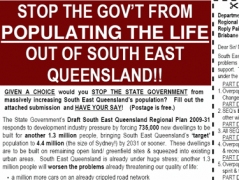 Given a choice would you stop the State Government from massively increasing South East Queensland's population?
Given a choice would you stop the State Government from massively increasing South East Queensland's population?
Use this link to Queensland Conservation Council's online submission form and have your say.
The State Government's Draft South East Queensland Regional Plan 2009-31 responds to development industry pressure by forcing 735,000 new dwellings to be built for another 1.3 million people, bringing South East Queensland's 'target' population to 4.4 million (the size of Sydney!) by 2031 or sooner. These dwellings are to be built on remaining open land /greenfield sites and squeezed into existing urban areas. South East Queensland is already under huge stress; another 1.3 million people will worsen the problems already threatening our quality of life:
Remember, personalised submissions get more attention. To edit your submission and add your own points just place your cursor either before or after the main text and type in normally. Your points will be a part of your submisson. Go to QCC Queensland Conservation Council website here to make your online submission http://qccqld.org.au/SEQ_submission.html
Send your submission by 3rd of April for your voice to be heard
Minister for Infrastructure and Planning Stirling Hinchliffe Tuesday, March 31, 2009 announced the public consultation period has been extended to 1 May instead of closing of this Friday.
Population: The elephant in the room viewpoint expressed by John Feeney in BBC article which looks at the global population situation raises similar concerns of carrying capacity at the global level.
"Our inability to live as we do, at our current numbers, without causing pervasive environmental degradation is the very definition of carrying capacity overshoot."
 An alliance of environmental and community groups wants South-East Queensland residents to demand the State Government stop destroying the region's environment and quality of life with huge population increases.
An alliance of environmental and community groups wants South-East Queensland residents to demand the State Government stop destroying the region's environment and quality of life with huge population increases.
This SEQ regional plan submission coupon has appeared in SEQ newspapers. You can clip and send the coupon too.  news-seqrp2-clipandsend1.pdf 90.87 Kb 29/03/2009, 17:43
news-seqrp2-clipandsend1.pdf 90.87 Kb 29/03/2009, 17:43
Under the State Government's Draft SEQ Regional Plan 2009-31, the population of the region would swell by another 1.3 million people within 20 years - to the same size as Sydney.
'This massive planned increase in population will condemn SEQ to an ever-worsening quality of life and eliminate any chance we might have of living sustainably,' said Simon Baltais, spokesperson for the alliance of groups that includes the Wildlife Preservation Society of Queensland, Sustainable Population Australia, the Nerang Community Association, Queensland Conservation Council, ( LACA is a member of QCC). Sunshine Coast Environment Council, Gold Coast & Hinterland Environment Council (Gecko) and the Community Alliance for Responsible Planning (CARP) Redlands.
'The numbers proposed under the draft plan will bring SEQ's total population to 4.4 million,' Mr Baltais said. 'This draft plan will push another 750,000 dwellings into existing urban areas and wildlife-friendly greenfield sites.
Queenslanders have until Friday 3 April to respond to the Draft SEQ Regional Plan 2009-2031.
Some groups eg GECKO have written to the new Ministers: Minister for Infrastructure and Planning The Honourable Stirling Hinchliffe and Minister for Climate Change and Sustainability The Honourable Kate Jones to request an extension and delay of the implementation of the Plan until some issues have been resolved -
Read Gecko's letter here.  gecko_request_seqrp_rewrite.doc 43.00 Kb 31/03/2009, 19:16
gecko_request_seqrp_rewrite.doc 43.00 Kb 31/03/2009, 19:16
You could base your own letter on this example.
 An example of a Properly Made Submission to Draft SEQ Regional Plan 2009-31 for Redlands is available here
An example of a Properly Made Submission to Draft SEQ Regional Plan 2009-31 for Redlands is available here  properly_made_submission_regional_plan_2009_redlands.doc 68.00 Kb 28/03/2009, 15:44 for your perusal and adaption to suit your area and concerns. Many of our concerns are common to many areas.
properly_made_submission_regional_plan_2009_redlands.doc 68.00 Kb 28/03/2009, 15:44 for your perusal and adaption to suit your area and concerns. Many of our concerns are common to many areas.
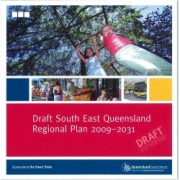 All information collected from valid submissions will help inform the finalised South East Queensland Regional Plan 2009-2031 - according to submission template provided by Queensland governement website.
All information collected from valid submissions will help inform the finalised South East Queensland Regional Plan 2009-2031 - according to submission template provided by Queensland governement website.
How to make your submission count
For the purposes of feedback, a properly made submission must:
? include the name and address of the submitter
? be made in writing, and signed by each person who has made the submission
? respond under the headings of the draft SEQ Regional Plan or draft state planning
regulatory provisions and other matters for consideration.
Information considered confidential should be clearly identified. Please note submissions may be accessed under the Freedom of Information Act 1992.
For your convenience we have converted this document to a Word document so that you can complete the essential information and ignore those bits you do not wish to comment on.  seqrp_submission__cover__form.doc 64.00 Kb 19/03/2009, 14:50
seqrp_submission__cover__form.doc 64.00 Kb 19/03/2009, 14:50
If you have any questions please contact secretary Anne Page. See contact page.
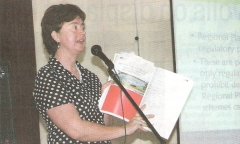 Jimboomba Times dated 18 March 2009 covered the community workshop.
Jimboomba Times dated 18 March 2009 covered the community workshop.
Regional plan discussed
Environmental Defenders member Jo Bragg talks the crowd through legal implications the draft plan
CONCERNED environmental groups gathered on Saturday to discuss the 2009-2031 draft South East Queensland Regional Plan.
Logan and Albert Conservation Association (LACA) vice president Kathy Faldt said about 40 people including representatives from the Environmental Defenders Office, Wildlife Logan, LACA and members of the public met to voice their concerns and discuss a way forward.
"The problem is the growth and development that is planned is not sustainable," Ms Faldt said.
 The draft SEQ Regional Plan and the draft state planning regulatory provisions are open for submissions from December 2008 to
The draft SEQ Regional Plan and the draft state planning regulatory provisions are open for submissions from December 2008 to
3 April 2009. After a review of the submissions, an updated SEQ Regional Plan will be finalised in July 2009. Documents are available on the government website.
All land in the region is divided into three regional land use categories Regional landscape and rural production area, Urban footprint and Rural living area. The plan is designed to deliver land for urban growth - with urban growth areas, future growth areas and identified growth areas.
You can find out which land use category applies to a property in the region by using the interactive mapping tool.
Explore the Department of Infrastrucure and Planning website for full details. More information will be extracted from government or council sites and posted here soon that relates to Logan and Scenic Rim areas. Please contact us if you would like help to make a submission.
If you are concerned for the longterm survival of Queensland's flora and fauna, their habitat and ours, please read these government documents and have a say. NOW EXTENDED UNTIL 1 MAY 2009
Here is the first draft of the SEQ Regional Plan Survey. It only allows for 10 questions - more questions requires a subscription. $20.00 per month or $200 per year and i assume that is $US.
Click Here to take survey
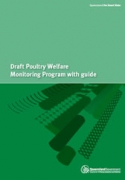 The Department of Primary Industries and Fisheries (DPI&F) announced the release of the draft program for monitoring the welfare of poultry. DPI&F General Manager of Animal Welfare, Dr Rick Symons said the document is open for public comment and he is keen to hear from interested parties. "The community, poultry industry and markets for poultry products have an expectation that poultry are treated humanely," said Dr Symons.
The Department of Primary Industries and Fisheries (DPI&F) announced the release of the draft program for monitoring the welfare of poultry. DPI&F General Manager of Animal Welfare, Dr Rick Symons said the document is open for public comment and he is keen to hear from interested parties. "The community, poultry industry and markets for poultry products have an expectation that poultry are treated humanely," said Dr Symons.
"To achieve this persons in charge of poultry have a duty of care to their animals and must comply with the Poultry Standards. "The Poultry Welfare Monitoring Program is aimed at preventing animal suffering, promoting standards of animal care and ensuring that people with poultry understand and comply with the Poultry Standards. "We are keen to hear from anyone interested in making a comment to ensure the final monitoring program is acceptable to the public and industry," said Dr Symons.
To ensure compliance, the final monitoring program will include audits of poultry producers by Authorised Officers appointed by DPI&F. Industry quality assurance programs may also be approved by DPI&F if they meet the principles of the monitoring program.
The final date for public comment was Sunday 25 January 2009.
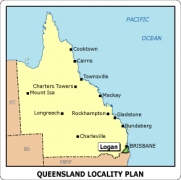 Debbie Best Deputy Director-General Department of Natural Resources and Water encourages interested parties to make a submission if they have any issues they wish to raise in regard to the finalisation of this draft plan.
Debbie Best Deputy Director-General Department of Natural Resources and Water encourages interested parties to make a submission if they have any issues they wish to raise in regard to the finalisation of this draft plan.
The draft plan is available for public comment and feedback. All submissions, properly made by 5pm, Friday 20 February 2009 will be considered by the Chief Executive of the Department of Natural Resources and Water (the department) prior to plan finalisation. A submission form is included with in the summary document. In accordance with the water resource plan, the Logan Basin Resource Operations Plan will initially deal with priority area 1, which is the area of the Logan River Water Supply Scheme. Subsequent amendments to the resource operations plan will occur to deal with other parts of the plan area including Moreton Bay Islands.
You can obtain a copy of the draft plan by contacting the department on 1800 308 252, by emailing This email address is being protected from spambots. You need JavaScript enabled to view it. or by visiting the department's website at: www.nrw.qld.gov.au/wrp/logan. Please see the link to the public notice.
 Ignoring calls for strong action on climate change, the Federal Government has announced its plan to cut carbon pollution by just 5% (increasing this to 15% only if other major polluters commit to a global agreement).
Ignoring calls for strong action on climate change, the Federal Government has announced its plan to cut carbon pollution by just 5% (increasing this to 15% only if other major polluters commit to a global agreement).
Let the Government know that this decision is unacceptable.
This decision does not place Australia in a position to save the Murray-Darling Basin, the Great Barrier Reef or the Australian Alps. Instead, it will hold back progress towards an effective international climate change agreement.
The Government has disregarded the advice of top scientists from the Intergovernmental Panel on Climate Change (IPCC) - that state that developed countries, as a group, must reduce their carbon pollution by 25-40% - and community support for greater action on climate change.
What's more, the plan will see billions of taxpayers' dollars handed directly to big polluters. However, this is not the final word. Let the Government know that this decision is unacceptable and must be revisited via the media and your local MP.
Visit the Australian Conservation Foundation website for tips on what to do.
BEST THINGS YOU CAN DO RIGHT NOW!
VISIT YOUR MP
WRITE TO A PAPER
CALL TALKBACK RADIO
Contact or email your friends and family, encourage them to make their voice heard too. Download the community action kit [26 p 2.69 MB pdf] from this page
To avoid dangerous climate change, and give our icons a fighting chance, we must commit to reducing our carbon pollution by at least a third by 2020.
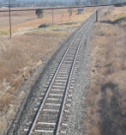 Queensland Transport has engaged Maunsell Australia to undertake preliminary planning and impact assessment for the Southern Freight Rail Corridor study (previously known as the Southern Infrastructure Corridor).
Queensland Transport has engaged Maunsell Australia to undertake preliminary planning and impact assessment for the Southern Freight Rail Corridor study (previously known as the Southern Infrastructure Corridor).
The study's aim is to identify a potential route for a freight rail corridor connecting the western railway near Rosewood to the interstate railway north of Beaudesert (see map below). The Southern Freight Rail Corridor will serve as a major freight link connecting a future Melbourne to Brisbane inland railway with the existing south east Queensland rail freight network. Further information is available at this page.
Draft Assessment report has been released and you are encouraged to have your say by 31 October 2008.
 ENDANGERED REGIONAL ECOSYTEM is threatened by subdivision and development application being assessed under out of date planning documents. A copy of this planning scheme is available on Logan's website here. It is a pdf file of 171 pages. It was first published 9 February 1985. The Beaudesert Shire Planning Scheme 2007 (commenced 30 March 2007) can be accessed from this webpage.
ENDANGERED REGIONAL ECOSYTEM is threatened by subdivision and development application being assessed under out of date planning documents. A copy of this planning scheme is available on Logan's website here. It is a pdf file of 171 pages. It was first published 9 February 1985. The Beaudesert Shire Planning Scheme 2007 (commenced 30 March 2007) can be accessed from this webpage.
 SEQ WATER STRATEGY - HAVE YOUR SAY!
SEQ WATER STRATEGY - HAVE YOUR SAY!
The Queensland Water Commission's (QWC) 50 year water supply strategy is nearing the end of its consultation phase. You can read it on the QWC website at www.qwc.qld.gov.au/SEQWS. Public submissions are due by the 31 July.
We encourage you to lodge a submission, as the more submissions QWC receive the more they will take notice of community concerns.
 Permanent Water Conservation Measures have been released for consultation. Closing date for feedback was 17 July 2008.
Permanent Water Conservation Measures have been released for consultation. Closing date for feedback was 17 July 2008.
The proposed permanent water conservation measures and Target 230 are designed to embed the efficient use of water into the everyday lives of SEQ residents out of drought. They will ensure we can enjoy our enviable lifestyle and amenities, but in a water efficient manner. Read the document Permanent Water Conservation Measures here (34p) and the consultation paper here.(14p).
Specifically permanent water conservation measures propose that:
Feedback is being sought from community members and an online survey is provided - with 12 questions for comment.
 The Minister for the Environment, Heritage and the Arts has formulated a proposal under Part 13A of the Environment Protection and Biodiversity Conservation Act 1999 (EPBC Act) to amend the List of Specimens taken to be Suitable for Live Import . A draft assessment report has been prepared by the Department of the Environment, Water, Heritage and the Arts (DEWHA) against the terms of reference approved by the Minister. The draft report assesses the suitability of import of the Savannah Cat into Australia. Comments were invited on the draft report for 20 business days, closed on 17 July 2008.
The Minister for the Environment, Heritage and the Arts has formulated a proposal under Part 13A of the Environment Protection and Biodiversity Conservation Act 1999 (EPBC Act) to amend the List of Specimens taken to be Suitable for Live Import . A draft assessment report has been prepared by the Department of the Environment, Water, Heritage and the Arts (DEWHA) against the terms of reference approved by the Minister. The draft report assesses the suitability of import of the Savannah Cat into Australia. Comments were invited on the draft report for 20 business days, closed on 17 July 2008.
Savannah cats, which can weigh more than 13kg, are described in the report as ''the result of selective breeding to establish desirable features (eg: large ears or wild-looking colouration and patterns) or temperament suitable for demand of the companion cat market''.
Mr Garrett said the report suggested the potential breeding in of wildcat genes to the existing feral cat population could lead to even more killing of Australian native animals. Savannah cats are a cross between a serval, which is an African wildcat, and a domestic cat and they can grow much larger than normal domestic cats. This report notes that there is potential for these cats to adapt to the Australian environment. Estimates suggest there could already be up to 12 million feral cats across Australia and they are already one of the single biggest killers of Australian native animals. The report also suggests that the potential breeding-in of wildcat genes to existing feral cat populations could see them develop even better hunting skills.
The minister said he would not hesitate to use his powers to prohibit the importation of the cats ''if it is necessary to protect the environment''.
Mr Garrett has allowed 20 working days for comment on the draft report.
WPSQ has made a submission to the federal government commenting the proposal to amend the List of Specimens Taken to be Suitable for Live Import (Live Import List) urging a ban on the import of savannah cats. WPSQ is urging a blanket change to the legislation that defines all 5th generation hybrids as domestic.
Visit the web page Savannah cats: the case against importation to read more about this issue.
RSPCA Australia has commented that allowing Savannah cats, which are currently classed as domesticated after five generations of breeding from their wild ancestors, into Australia would be a huge mistake.
Australian veterinarians have also commented strongly against the importation of more wild-domestic pet hybrids like the savannah cats currently in quarantine.
The report Draft environmental assessment of the suitability of the import of the Savannah Cat (Domestic Cat x Serval hybrid specimens) into Australia 19 June 2008 is available online here.
Comments received and any relevant additional information provided will be considered by DEWHA in finalising the assessment report.
Submissions should be in writing and sent to
Director
Exotic Species Regulation Section
Wildlife Branch
Department of the Environment, Water, Heritage and the Arts
GPO Box 787
CANBERRA ACT 2601
or to
This email address is being protected from spambots. You need JavaScript enabled to view it.
Australian wildlife is already endangered by many threats - habitat clearing, climate change, introduced feral animals.
Senator Christine Milne from the Green presented a petition to the federal government 26 June 2008. This is available in Hansard. This petition can be accessed here. This was begun by an online herpetology discussion group.
The University of Sydney's professor of ecology, Chris Dickman, is warning these hybrid cats would be uncontrollable in Australia. "It hasn't come in through the usual quarantine processes or risk assessments that would otherwise need to be done." Forty of the nation's leading feral animal researchers are calling for urgent changes to prevent hybrid supercats from being imported into Australia.
The Australian environment is suffering from the humble domestic cat gone feral. Imagine the carnage from a bigger stronger feral cat bred from an already wild animal.
For more coverage on this topic see news from Invasive Animals Cooperative Research Centre's CEO Tony Peacock at this site and petitions both for and against importation.
Information on the damage feral cats are currently doing is provided at this cat facts page.
Help stop the importation of hybrid cats such as "Savannah cats"! Please participate by signing the petition and let the Honorable Peter Garret, Minister for Environment, Heritage and The Arts and the Senate know that these hybrid killing machines don't belong here or comment on the draft report by 17 July 2008.
An African Serval is the most efficient wild cat hunter in Africa. Australia's quarantine regulations make it legal for a cat that is only five generations away from a purebred serval to come into the country. In a 2007 paper in Science, Carlos Driscoll of Oxford University showed that domestication of the cat probably began 12,000 years ago and was completed 8,000 years ago. New designer breeds of cat didn't exist 25 years ago.
Keeping your cat inside or in a cattery - see more here and here - will keep your pet safe and also protect our wildlife.
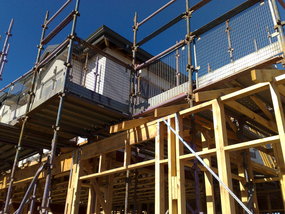 Housing sustainability is the issue that "literally goes to the heart of how we live", the state's planning minister Paul Lucas said, putting forward a proposal to toughen sustainability measures in housing design. Mr Lucas said the kernel of the proposal, Improving Sustainable Housing in Queensland, was a requirement that new houses built from 2009 achieve a five-star energy efficiency rating by improving water conservation, using insulation and natural lighting.
Housing sustainability is the issue that "literally goes to the heart of how we live", the state's planning minister Paul Lucas said, putting forward a proposal to toughen sustainability measures in housing design. Mr Lucas said the kernel of the proposal, Improving Sustainable Housing in Queensland, was a requirement that new houses built from 2009 achieve a five-star energy efficiency rating by improving water conservation, using insulation and natural lighting.
He said inefficient housing design and outdated building codes resulted in higher energy costs and harmful impacts on the environment. Submissions close September 12.
 Deputy Premier and Minister for Infrastructure and Planning Paul Lucas in a recent media release said that the great value of the current SEQ Regional Plan is its protection of 80 per cent of the region from urban development. Closing date for comment on this initial stage was Friday 6 June COB (close of business) and the proforma is here.
Deputy Premier and Minister for Infrastructure and Planning Paul Lucas in a recent media release said that the great value of the current SEQ Regional Plan is its protection of 80 per cent of the region from urban development. Closing date for comment on this initial stage was Friday 6 June COB (close of business) and the proforma is here.
Call for submissions
The Honourable Paul Lucas, Deputy Premier and Minister for Infrastructure and Planning; the Honourable Desley Boyle Minister for Tourism, Regional Development and Industry; and the Honourable Andrew McNamara, Minister for Sustainability, Climate Change and Innovation are proposing to prepare a State Planning Policy (SPP) under the Integrated Planning Act 1997. The SPP will provide a statewide framework for appropriate planning and regulation of land use surrounding high impact industries, with the aim of minimising the potential for land use conflicts and adverse impacts on the environment. The Department of Infrastructure and Planning invites submissions on: the issues to be addressed by the SPP and how those issues should be addressed. The closing date for submissions was COB Wednesday 11 June 2008. More information is available on the Department of Infrastructure and Planning website.
An updated SEQ Regional Plan 2009 - 2031 is in planning now - 12 months earlier than originally planne d. A draft will be released in December 2008, with submissions closing end March 2009. HAVE AN INPUT NOW - by Friday 6 June 2008.
d. A draft will be released in December 2008, with submissions closing end March 2009. HAVE AN INPUT NOW - by Friday 6 June 2008.
The Queensland Government has announced the TransLink Transit Authority will begin operation on 1 July 2008, and identifying what is important to customers and sourcing fresh ideas is a part of this process. By having your say online, you can help create a transit authority that will best meet the needs of South East Queensland. Closing date for submissions is 7 May 2008. To have your say online go to http://www.getinvolved.qld.gov.au/consultqld/